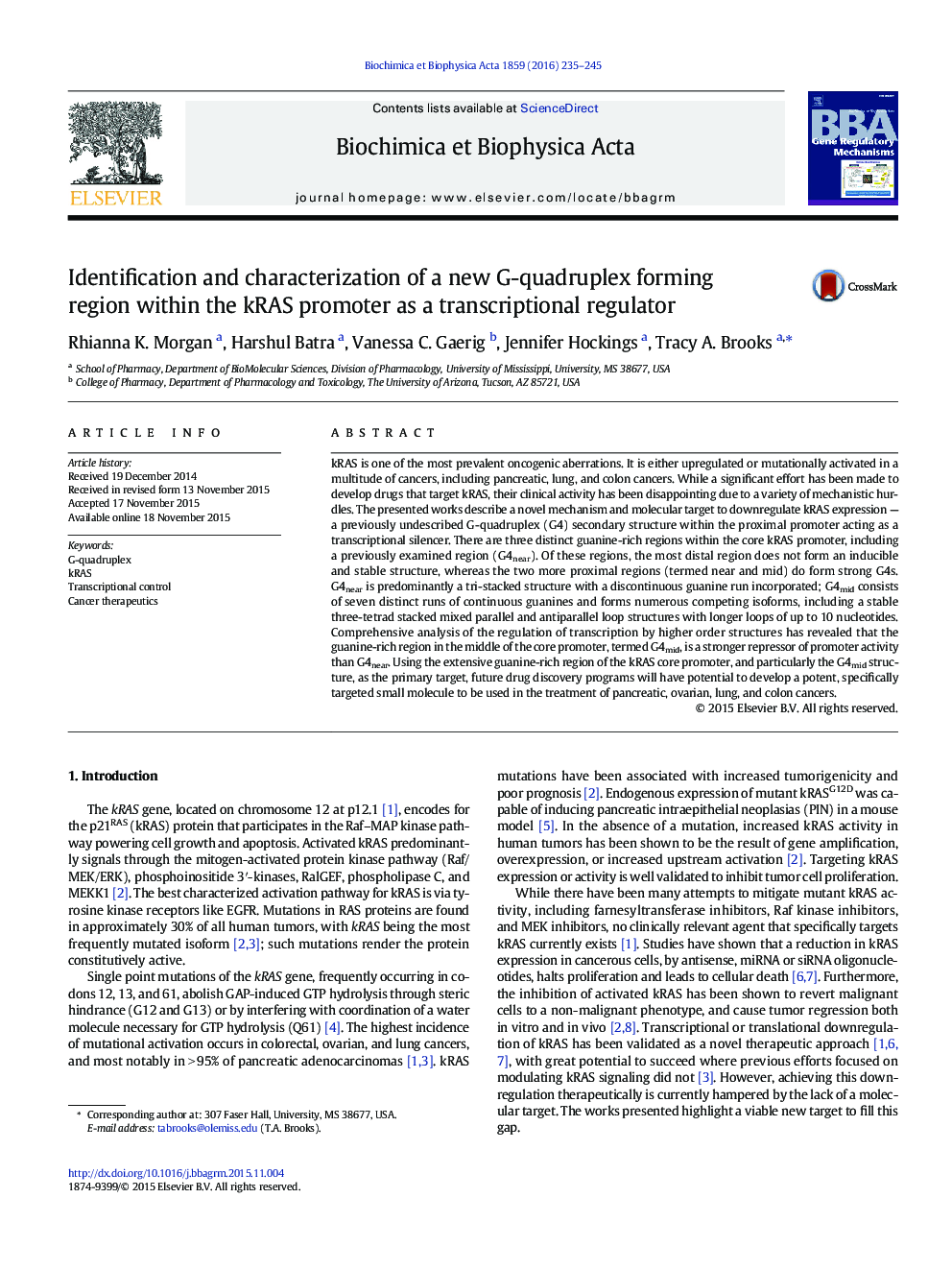| Article ID | Journal | Published Year | Pages | File Type |
|---|---|---|---|---|
| 1946336 | Biochimica et Biophysica Acta (BBA) - Gene Regulatory Mechanisms | 2016 | 11 Pages |
•Three distinct G-quadruplex forming regions exist within the core kRAS promoter.•The near- and mid-regions form inducible and stable higher order DNA structures.•G-quadruplex transcriptional silencing potential predominates in the mid-region.•Mid-G-quadruplex was examined under varying stressors, and predominant model was described.
kRAS is one of the most prevalent oncogenic aberrations. It is either upregulated or mutationally activated in a multitude of cancers, including pancreatic, lung, and colon cancers. While a significant effort has been made to develop drugs that target kRAS, their clinical activity has been disappointing due to a variety of mechanistic hurdles. The presented works describe a novel mechanism and molecular target to downregulate kRAS expression — a previously undescribed G-quadruplex (G4) secondary structure within the proximal promoter acting as a transcriptional silencer. There are three distinct guanine-rich regions within the core kRAS promoter, including a previously examined region (G4near). Of these regions, the most distal region does not form an inducible and stable structure, whereas the two more proximal regions (termed near and mid) do form strong G4s. G4near is predominantly a tri-stacked structure with a discontinuous guanine run incorporated; G4mid consists of seven distinct runs of continuous guanines and forms numerous competing isoforms, including a stable three-tetrad stacked mixed parallel and antiparallel loop structures with longer loops of up to 10 nucleotides. Comprehensive analysis of the regulation of transcription by higher order structures has revealed that the guanine-rich region in the middle of the core promoter, termed G4mid, is a stronger repressor of promoter activity than G4near. Using the extensive guanine-rich region of the kRAS core promoter, and particularly the G4mid structure, as the primary target, future drug discovery programs will have potential to develop a potent, specifically targeted small molecule to be used in the treatment of pancreatic, ovarian, lung, and colon cancers.
